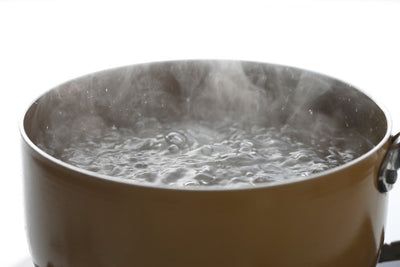Eric Roy, Ph.D. | Scientific Founder
With water quality in the national spotlight, we get a lot of questions about water quality in major US cities. When Hydroviv optimizes a filter for a city's water, we look at a number of factors. This Chicago drinking water quality report gives a quick look at some of the things that went into our assessment, as well as some advice for people who choose not to use a filter in their home. **** We updated this article in March 2017 to add some information about chromium 6***
Chicago’s Water Source: Lake Michigan
Chicago draws its drinking water from Lake Michigan, a body of water that has been historically plagued with problems caused by industrial polluters. According to the most recent available Source Water Assessment prepared by the Illinois EPA, all 63 miles of shoreline were flagged as “Threatened”, because phenols (associated with industrial wastes from coal distillation and chemical manufacturing) were present at concentrations in excess of the allowable limit. Furthermore, a 2016 report prepared by the Illinois EPA categorizes 10 beach segments and several rivers that flow into Lake Michigan as “impaired” (according to Section 303(d) of the Clean Water Act), due to high concentrations of mercury, polychlorinated biphenyls, pesticides, herbicides, and other industrial chemicals like chromium 6. In addition to direct human inputs that impact water quality of Lake Michigan, biomass decomposition in the sediments often generates chemicals that make the water taste and smell bad.
How High Are Chromium 6 Levels In Chicago?
Between 2013-2015, Chicago reported that chromium 6 concentrations were, on average, 190 parts per trillion. Although chromium 6 is not regulated by EPA, the levels reported in Chicago's tap water are roughly 20 times higher than what is considered to be negligible risk.
Does Chicago’s Aging Infrastructure Contaminate Tap Water With Lead?
As most people are now aware, lead can accumulate in tap water that flows through lead-containing pipes, soldered joints, and plumbing fixtures. In Chicago, about 80% of water service lines city-wide are made of lead, so a large portion of the population should consider taking steps to ensure their family's safety.
Several investigative reports by large media outlets have been highly critical of Chicago’s lead testing program. The Chicago Tribune reported that many of the sites selected for lead testing were strategically selected because they are in areas with low risk for lead contamination, often at the homes of current and former water department. The City argued that recruiting water department employees to collect samples would would ensure that samples were properly collected. However, in a different story, published by The Guardian, Chicago city employees were criticized for using sampling “cheats” that make lead concentration seem lower than they really are.
In Chicago, only about 50 samples every 3 years are collected from homes and tested for lead citywide (most recently in 2015). In the 2015 Consumer Confidence Report (CCR) published by the city, 3 out of 50 sampling sites had lead levels that were over the 15 part per billion (ppb) EPA Action Level, and 10 percent of samples had lead concentrations over 9 ppb. While these data indicate that the city as a whole is in compliance with federal regulations, the EPA, CDC, and World Health Organization all agree that there is no such thing as a safe amount of lead exposure for children, so households with children should either get their water tested, or take steps to prevent exposure.
How Chicago Residents Can Minimize Chromium 6 & Lead Exposure
Chromium 6
Unlike lead, which comes from lead-containing pipes, solder, valves, and fixtures, chromium 6 contamination comes from the water source itself. Therefore the only way to remove it from water is by using a high quality filter. We are partial to the technology that we use in our system, but reverse osmosis will also work.
Lead
The City of Chicago officially recommends that residents take measures to reduce their exposure to lead in water used for drinking, cooking, and preparing infant formula:
- Allow water to run for at least 5 minutes before using it for drinking or cooking
- Only operate the faucet at moderate flow when collecting water for drinking, cooking, and preparing infant formula. This practice reduces the likelihood that lead-containing particles are swept into the water as it flows through the pipes.
- Never use water from the hot water tap for drinking, cooking or preparing infant formula
- Regularly remove and clean out their faucet aerator, because lead-containing particles can become trapped in the mesh and leach lead into the water as it flow through.
Hydroviv advises Chicago residents who choose not to filter their water for lead to take advantage of the city-sponsored lead testing program, where people can request a free test kit by calling 311.
As always, we encourage everyone to take advantage of Hydroviv's "Help No Matter What" technical support policy, where we answer questions related to Chicago's water pollution, drinking water, and water filtration, even if you have no desire to purchase our products. Drop us a line at support@hydroviv.com
Other Articles We Think You'll Love
5 Most Important Things To Know About Chromium 6 In Drinking Water
How To Filter Chromium 6 From Drinking Water
Summary of Problems With Chicago Tap Water







